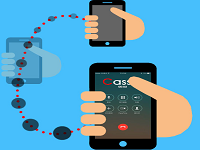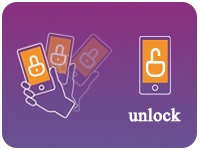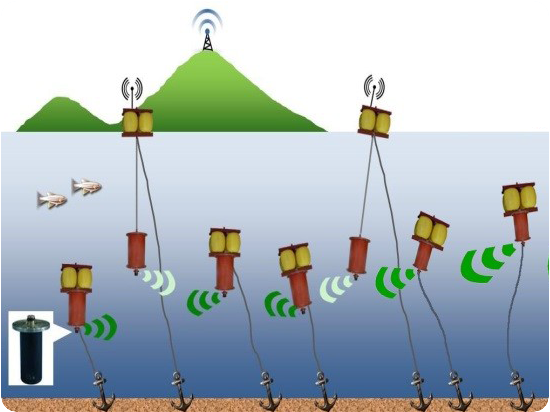Menu
| ·Home | ·Lesson | ·Oceansense |
| ·Research | ·Selected Publications | ·Student List |
1. 'Ocean Fishery Resource Time-Space Revolution Modeling and Applying on Integration of Fishery Ship Traces and Remote-Sensing Images ', Open Foundation of Qingdao National Laboratory for Marine Science and Technology (QNLM20160RP0405), 2017.1 – 2019.12. (Principal Investigator)
2. 'Research on Theory and Application on Time Synchronization in Underwater Acoustic Sensor Networks', National Science Foundation of China, (#61379128), 2014.1 – 2017.12. (Principal Investigator)
3. 'Research on Key Theory and Technology of Delay Tolerant Networks', Key Program of National Science Foundation of China (#60933011), 2010.1-2013.12. (Major Investigator)
4. 'Research on Communication Devices for Underwater Sensors', Program of High Technology Development of Qingdao (# 2010-3-4-1-6-jch), 2010.1-2012.12. (Principle Investigator)
5. 'Research on Topology-aware Incentive Mechanism in Peer-to-Peer Systems based on Reputation and Trust', supported by National Science Foundation of China (#60703082), 2008.1-2010.12. (Principal Investigator)
6. 'Research on Offshore Wireless Sensor Networks (OceanSense)', sub-projects of Research on Basic Theory and Key Technologies of Wireless Sensor Networks, supported by National Program on Key Basic Research Project (973 program, #2006CB303000), 2009.7-2010.12. (Major Investigator)
7. 'Research on Information Sharing and Exchanging Techniques based on Grid Computing' ,supported by High Technology Program of China (863 programs, #2006AA09Z139), 2006.1-2008.12. (Major Investigator)
| Motion Gesture Recognition via Accelerometer Accelerometers have been widely embedded in most current mobile devices, enabling easy and intuitive operations. This paper proposes a Motion Gesture Recognition system (MGRA) based on accelerometer data only, which is entirely implemented on mobile devices and can provide users with real-time interactions. A robust and unique feature set is enumerated through the time domain, the frequency domain and singular value decomposition analysis using our motion gesture set containing 11,110 traces. The best feature vector for classification is selected, taking both static and mobile scenarios into consideration. MGRA exploits support vector machine as the classifier with the best feature vector. Evaluations confirm that MGRA can accommodate a broad set of gesture variations within each class, including execution time, amplitude and non-gestural movement. Extensive evaluations confirm that MGRA achieves higher accuracy under both static and mobile scenarios and costs less computation time and energy on an LG Nexus 5 than previous methods. |
| Smartphone Authentication on Motion Gesture with a 3-D Accelerometer Smartphones have become prevalent in our lives with various of apps, such as email, social networking and electronic payment. Since these apps store privacy and sensitive information in smartphones, user authentication is increasingly crucial for privacy protection. Existing researches demonstrated the feasibility of motion gesture authentication with accelerometer. However, the distinguishing features hiding in the acceleration traces of motion gestures remain unknown. In this project, we present our scheme of Smartphone Authentication on Motion Gestures by focusing on feature extraction and select the best feature vector. SAMG confirms that authentication on statistical features from raw acceleration series has higher accuracy, shoulder surfing resistance, easy to remember and lower overhead. |
| Indoor Localization and Tracking with Smartphone Indoor localization provides crucial services for mobile and pervasive applications from advertisement promotion in shopping mall to navigation during emergency rescue. Taken along by users round-the-clock, mobile phones nowadays have become the most important information interface between users and environments, stimulating extensive research on localization based on smartphones. So high accurate indoor localization and tracking of smart phones is critical to pervasive applications. In this project, we first present a Pedestrian tracking system based on one Smartphone residing in trousers’ front Pocket (PSP), exploiting built-in accelerometers for stride detection and stride length estimation, and gyroscopes for heading estimation. And we offers a new perspective to exploit RSS readings by their contrast relationship rather than absolute values, leading to three observations and functions called turn verifying, room distinguishing and entrance discovering. On this basis, we design WaP, an indoor localization and tracking system exploiting particle filters to combine dead reckoning, RSSbased analyzing and knowledge of floor plan together. Experiment results show that WaPcan achieve average localization error of 0.71m for 100 trajectories by 8 pedestrians. |
| Time Synchronization Mechanism for Underwater Sensor Networks Time synchronization is the fundamental problem in distributed sensor networks. Specifically, time stamp is an important element of sensing data. Time synchronization for Underwater Sensor Networks (UWSNs) is more challenging because of two unique characteristics.First, UWSNs communicate through acoustic signals with low propagation speed, leading to significant propagation delay comparing to RF signals. Second, the restricted mobility of sensor nodes caused by ocean current, wind or tide brings new challenge to propagation delay estimation. In order to face the long propagation delay and mobility of sensor nodes in UWSNs, several protocols have been proposed. However, all existing UWSN synchronization protocols focus on single-hop based synchronization. For multi-hop scenario, all these protocols can only be applied in hop by hop manner since not all unsynchronized nodes can communicate with beacons directly. In this project, we focus on synchronization in multi-ho UWSNs, and propose correlation solutions. Simulation results confirm that our methods have achieved comprehensive performance improvement on synchronization accuracy, message overhead and time cost. |



